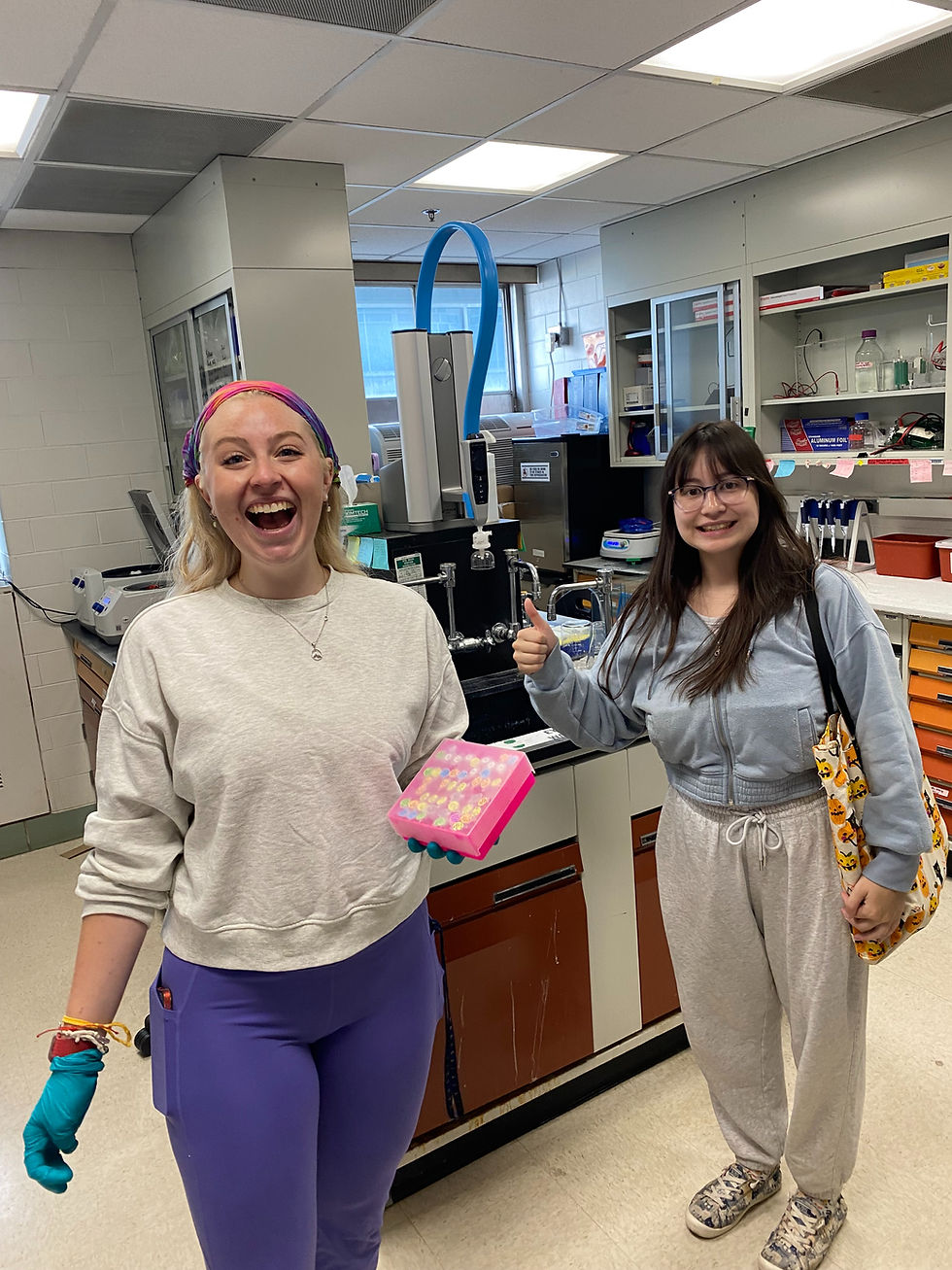WVU biochemist goes online to X-ray life-sustaining crystals
- aaronrobart0
- Aug 27, 2020
- 3 min read
Updated: Aug 28, 2020
Aaron Robart, assistant professor of biochemistry at the WVU School of Medicine remotely control an X-ray beam strong enough to show crystals’ molecular structures. The X-ray beam is part of the Advanced Photon Source in Chicago. Researchers at WVU can manipulate it via the Internet.

Under conventional magnification, the crystals Aaron Robart grows in his West Virginia University lab may look like simple rock salt, but by bombarding them with X-rays, he and his research team can build computational models that reveal the molecules within.
On August 22, Robart, assistant professor of biochemistry in the WVU School of Medicine, used the powerful Advanced Photon Source at the U.S. Department of Energy’s Argonne National Laboratory in Chicago to zap three types of life-sustaining crystals with X-rays revealing molecular structures that resemble tangles of corkscrew pasta or patterns of daisies.
And he did it without leaving Morgantown, West Virginia.
Robart jokes that before it was possible to control the APS from a distance, he “practically lived in Chicago” so he could visit the facility in person. Because “beam time” at the Advanced Photon Source is scarce and can fall in the middle of the night, being able to remotely manipulate the X-ray beams is no small convenience.
He can control the ultra-bright, high-energy X-ray beams via the Internet to gather data that may drive new treatments for cancers, neurological diseases, stroke, diabetes and other conditions that arise as our cells multiply, age and accumulate wear and tear.
Robart explains that human chromosomes are capped with telomeres – regions that protect chromosomes from deterioration the way that plastic tips at the ends of shoelaces prevent them from fraying.
Normally telomeres shorten as we get older and our chromosomes replicate over and over again, but in the case of diseases such as cancer, telomeres may replenish themselves, making it possible for cancer cells to avert programmed cell death and be, theoretically, immortal.
The Advanced Photon Source is one of the few facilities in the country that can reveal detailed information about these phenomena.
“Instead of smashing particles together, the Advanced Photon Source makes them travel in a large, closed loop that can fit about one and a half football fields inside the circumference,” Robart says. “This produces very strong and incredibly stable X-rays that we use to obtain atomic-level detail of how molecular machines perform the chemical reactions of life.”
Michael Schaller, chair of the department of biochemistry, says that merely observing a crystal under a microscope would not reveal such complexity.
“It is similar to trying to determine what an elephant looks like by bouncing ping-pong balls off of it, removing the elephant, and then trying to determine what it looks like based on where all of the ping-pong balls landed,” he says.
One of the crystals Robart X-rayed with the Advanced Photon Source is an enzyme crucial to liver metabolism. Another is a molecular complex that promotes the healthy breakdown of proteins. The third crystal comprises components of the “spliceosome,” a combination of RNA and protein that guides how pieces of RNA are cut apart and pasted together.
“You can’t fix a machine until you know how it works,” Robart says.
With innovations like the virtual manipulation of the Advanced Photon Source, biochemists at WVU can look far afield for insights into molecular machines while staying close to home.
-WVU-
see/09/19/17
CONTACT: Tara Scatterday, WVU School of Medicine 304.293.0630; tdscatterday@hsc.wvu.edu
Follow @WVUToday on Twitter.






Comments